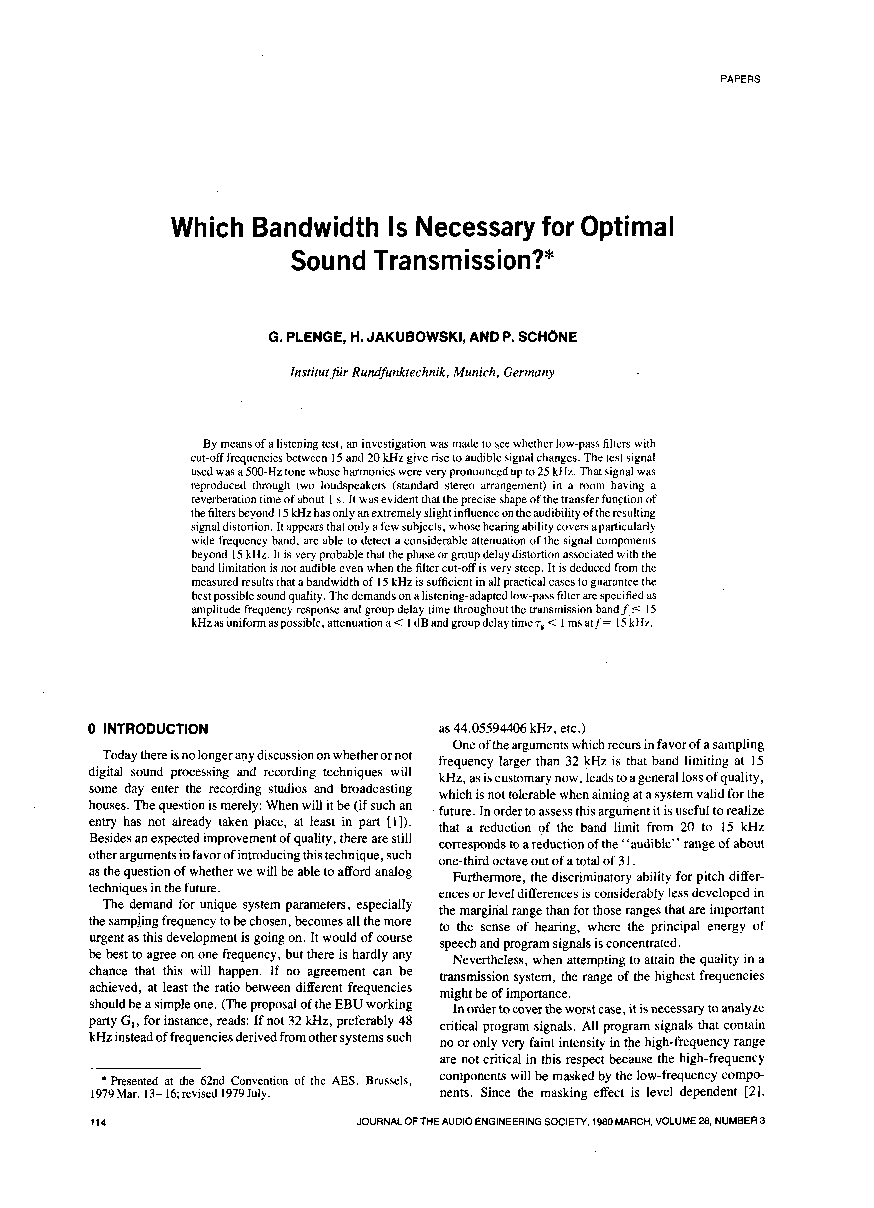Home / Publications / E-library page
You are currently logged in as an
Institutional Subscriber.
If you would like to logout,
please click on the button below.
Home / Publications / E-library page
Only AES members and Institutional Journal Subscribers can download
By means of a listening test, an investigation was made to see whether low-pass filters with cut-off frequencies between 15 and 20 kHz give rise to audible signal changes. The test signal used was a 500-Hz tone whose harmonics were very pronounced up to 25 kHz. That signal was reproduced through two loudspeakers (standard stereo arrangement) in a room having a reverberation of about 1 s. It was evident that the precise shape of the transfer function of the filters beyond 15 kHz has only an extremely slight influence on the audibility of the resulting signal distortion. It appears that only a few subjects, whose hearing ability covers a particularly wide frequency band, are able to detect a considerable attenuation of the signal components beyond 15 kHz. It is very probable that the phase or group delay distortion associated with the band limitation is not audible even when the filter cut-off is very steep. It is deduced from the measured results that a bandwidth of 15 kHz is sufficient in all practical cases to guarantee the best possible sound quality. The demands on a listening-adapted low-pass filter are specified as amplitude frequency response and group delay time throughout the transmission band f-15 kHz as uniform as possible, attenuation a<1 dB and group delay time (symbols)<1 ms at f=15 kHz.
Author (s): Plenge, Georg; Jakubowski, Horst; Schöne, Peter
Affiliation:
Institut fiir Rundfunktechnik, Munich, Germany
(See document for exact affiliation information.)
Publication Date:
1980-03-06
Import into BibTeX
Permalink: https://aes2.org/publications/elibrary-page/?id=4000
(491KB)
Click to purchase paper as a non-member or login as an AES member. If your company or school subscribes to the E-Library then switch to the institutional version. If you are not an AES member Join the AES. If you need to check your member status, login to the Member Portal.

Plenge, Georg; Jakubowski, Horst; Schöne, Peter; 1980; Which Bandwidth is Necessary for Optimal Sound Transmission? [PDF]; Institut fiir Rundfunktechnik, Munich, Germany; Paper ; Available from: https://aes2.org/publications/elibrary-page/?id=4000
Plenge, Georg; Jakubowski, Horst; Schöne, Peter; Which Bandwidth is Necessary for Optimal Sound Transmission? [PDF]; Institut fiir Rundfunktechnik, Munich, Germany; Paper ; 1980 Available: https://aes2.org/publications/elibrary-page/?id=4000